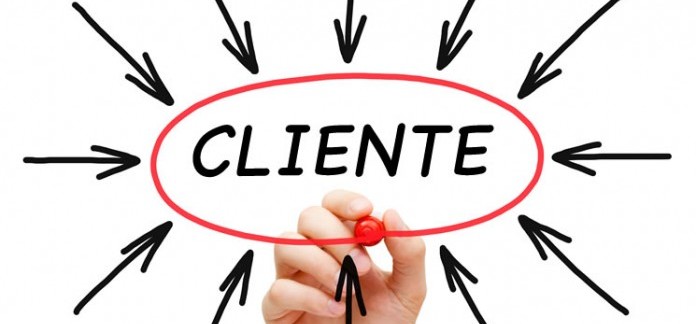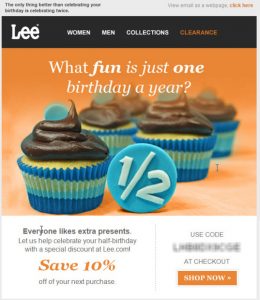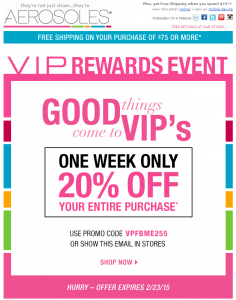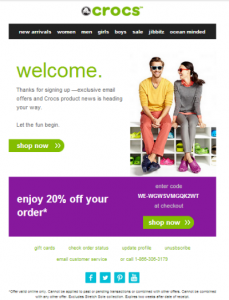What is the User Lifecycle and how to apply it to Email Marketing?

Today we will discuss one of the tools for Email Marketing most important things to keep in mind and, above all, to apply in our strategy: the User Life Cycle. Let's see how it can help us establishing profitable relationships with our subscribers.
It is already a reality that mass marketing is losing power in the face of the relationship marketing. This new strategy allows us to analyse the information we obtain from users and their behaviour in order to get to know them better and achieve better results. At this point, the User Life Cycle takes on relevance, which is the model that helps us to know how to deal with each user according to their status (customer or potential customer) throughout the life of their relationship with the brand. In fact, it is a model that has been used precisely to justify and apply relationship marketing.
Why is it important to have it present in our Email Marketing strategy?
The User Life Cycle will allow us to know what is the relationship that each of our subscribers has with our brand. In this way, we will be able to know what kind of emails we can send them and what their content should be. It is important to bear in mind that we cannot treat all users the same, if we do so, the only thing we will achieve is that the unsubscribe rate will increase and the positive indicators (open rate, click-through rate and click-to-open rate) will decrease. The User Life Cycle has 5 distinct phases which, as mentioned above, are related to the involvement of a person, in this case the subscriber, at a given moment.
In this phase we would place all potential customers who, for different reasons, have decided to give us their consent to start a relationship with them. What should a brand do with this type of user? It should focus on meeting the expectations that the subscriber has in order to start establishing quality links with them. The objective is that the user starts interacting with the brand and become a active userthat is, someone who opens and reads the emails we send, who visits our website and who participates in social media. Therefore, we could summarise that the objective of this phase is to achieve a high activity rates. At all times it will be really important that we know how to distinguish between active and inactive records in order to be able to act in each case.
On the right you can see an example of activation email which not only welcomes the user, but also offers an exclusive discount via a code.
- Conversion phase
In the conversion phase We would find those users who already have a good relationship with the brand and are active, but have not yet made a first purchase. Therefore, at this stage, we would focus on moving to the next level and achieving conversion. It will be very interesting to design emails designed to make the user take action, for example, with an attractive discount or an exclusive benefit.
- Growth phase
 When a user has a high level of engagement with the brand and has already made a first purchase, he/she is in the top position. growth phase. It is important to establish a series of indicators that show the growth potential of each of the users at this stage. For example: frequency of purchase, value of purchase, etc. If we have this under control, we will know who to allocate more or less resources to.
When a user has a high level of engagement with the brand and has already made a first purchase, he/she is in the top position. growth phase. It is important to establish a series of indicators that show the growth potential of each of the users at this stage. For example: frequency of purchase, value of purchase, etc. If we have this under control, we will know who to allocate more or less resources to.
The main objective of this phase is to increase user interactionsThe aim is to maximise the return on investment in terms of openings, clicks, website visits, social media engagement and purchases, in order to maximise profitability and return.
On the one hand, the upselling is a sales technique that can help us a lot in this phase thanks to the strategy of inducing the customer to buy the most expensive products or those in which we are most interested. In this way we will achieve a much more profitable sale. On the other hand, the trigger marketing can also become our best ally, as through personalised actions sent to a customer after having carried out some kind of transaction or on the occasion of a special date (birthday), it allows us to convert potential customers into active customers, loyal customers and even recover those we have lost throughout the whole process.
Here you can see what the company's email looks like. Lee sent to a user who was in a growth phase. The customer is congratulated on his birthday and offered a discount as a gift.
- Retention phase
As the name suggests, the aim of this phase is to retaining customers that have a  high level of involvement and acceptance of the brand. It is important to keep in mind the 80/20 or Pareto rule (20% of users contribute 80% of the value), and the fact is that in every business there are a number of customers who produce most of the revenue. The star question is, What can we do to retain them and prevent them from fleeing to competitors? We can improve the service offered to them, get to know and deepen our knowledge of their interests and, above all, take their opinions, criticisms and evaluations into account.
high level of involvement and acceptance of the brand. It is important to keep in mind the 80/20 or Pareto rule (20% of users contribute 80% of the value), and the fact is that in every business there are a number of customers who produce most of the revenue. The star question is, What can we do to retain them and prevent them from fleeing to competitors? We can improve the service offered to them, get to know and deepen our knowledge of their interests and, above all, take their opinions, criticisms and evaluations into account.
It is worth noting that these users value and have a special bond with the brand, which is why they become the main speakers of the brandThe project's reputation and awareness of the project will be considerably increased by those who spread the word among their contacts.
On the right is an example of a retention email of the company Aerosols in which a VIP user is rewarded for his or her loyalty. It is a clear example of how to pamper a customer in order to retain them.
In the User Life Cycle, we also find those who users who add almost no value to the brandnot only because they do not generate any conversions, but also because of their low level of interaction. In this case, we must implement actions that allow us to determine whether or not it is really worth continuing to invest in them. The idea is to select users who have not interacted with the brand (for example, by not opening emails in a certain period of time) and carry out specific actions with exclusive benefits to encourage their interest and get them to become active users. If the actions are successful, we will place these users back in the recruitment or conversion phase. On the other hand, if we see that they still do not respond to the reactivation actions we have taken, we must exclude them from our database and to take them into account in future email marketing campaigns.
Finally, we would like to show a very creative and ingenious example of reactivation email. In this case, the company Missguided has chosen to make a storytelling of its company's relationship with a customer who is at this stage. In addition, he has proposed an attractive incentive to ensure that the story ends with a happy ending for both of them.

